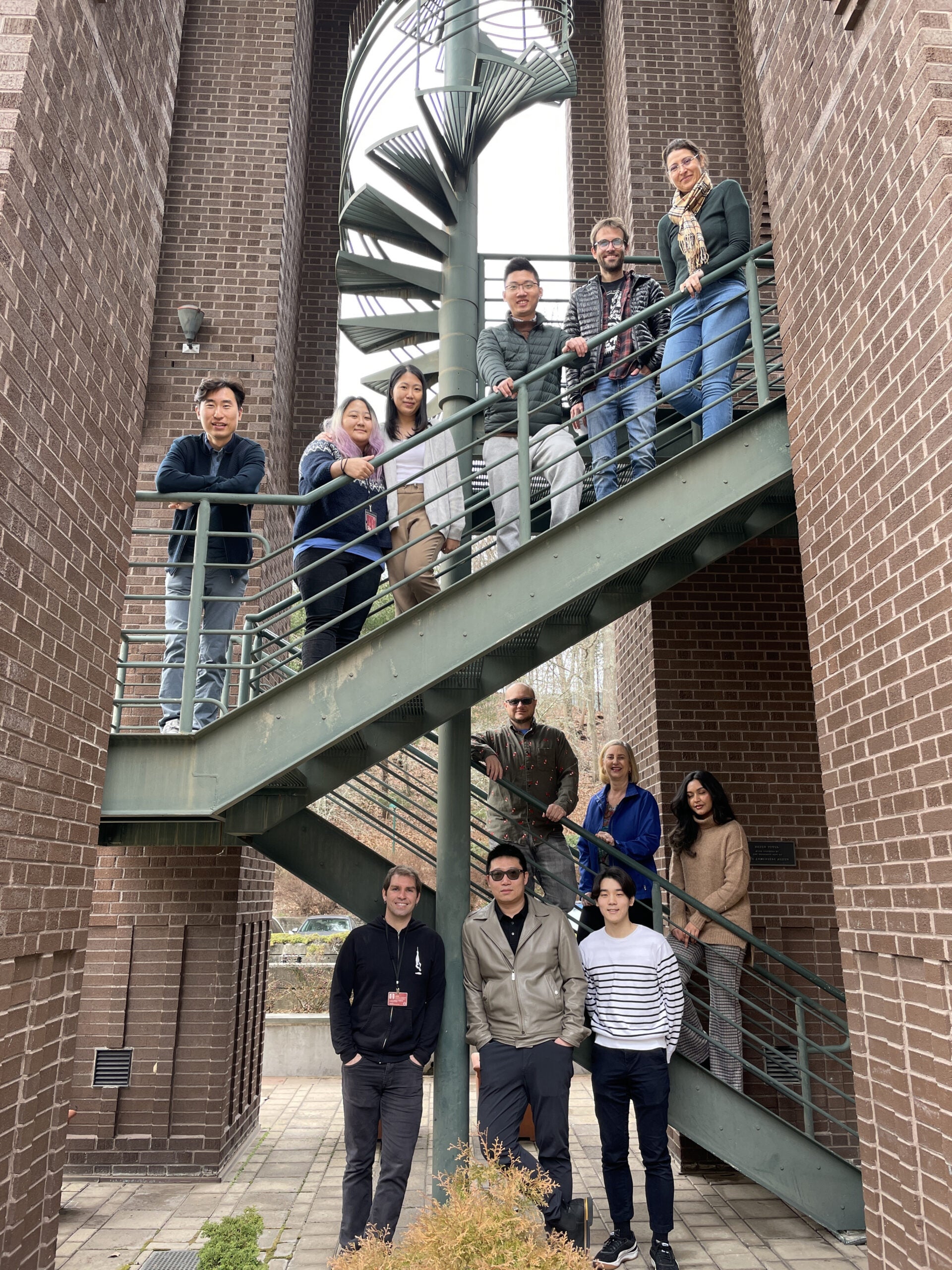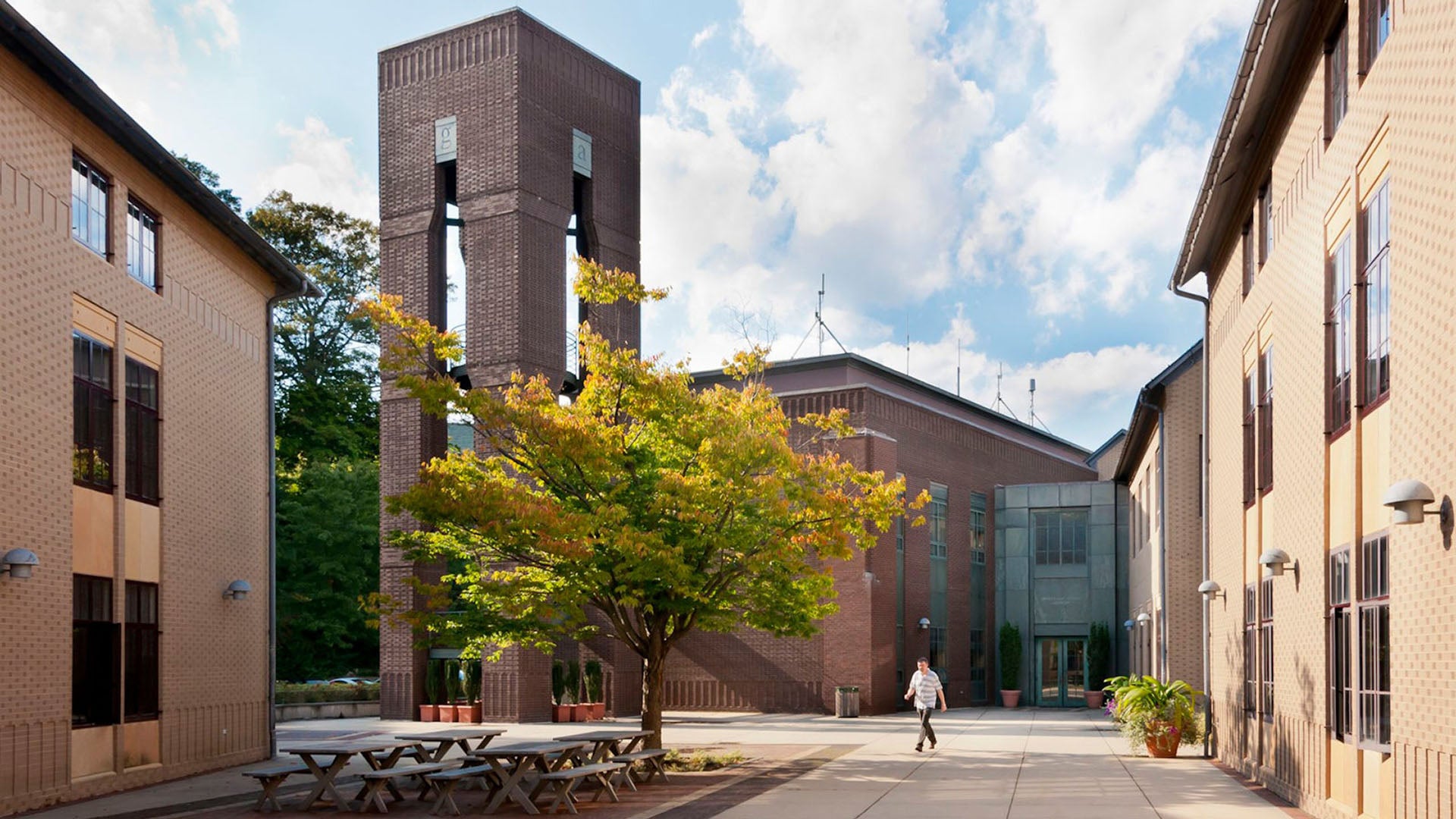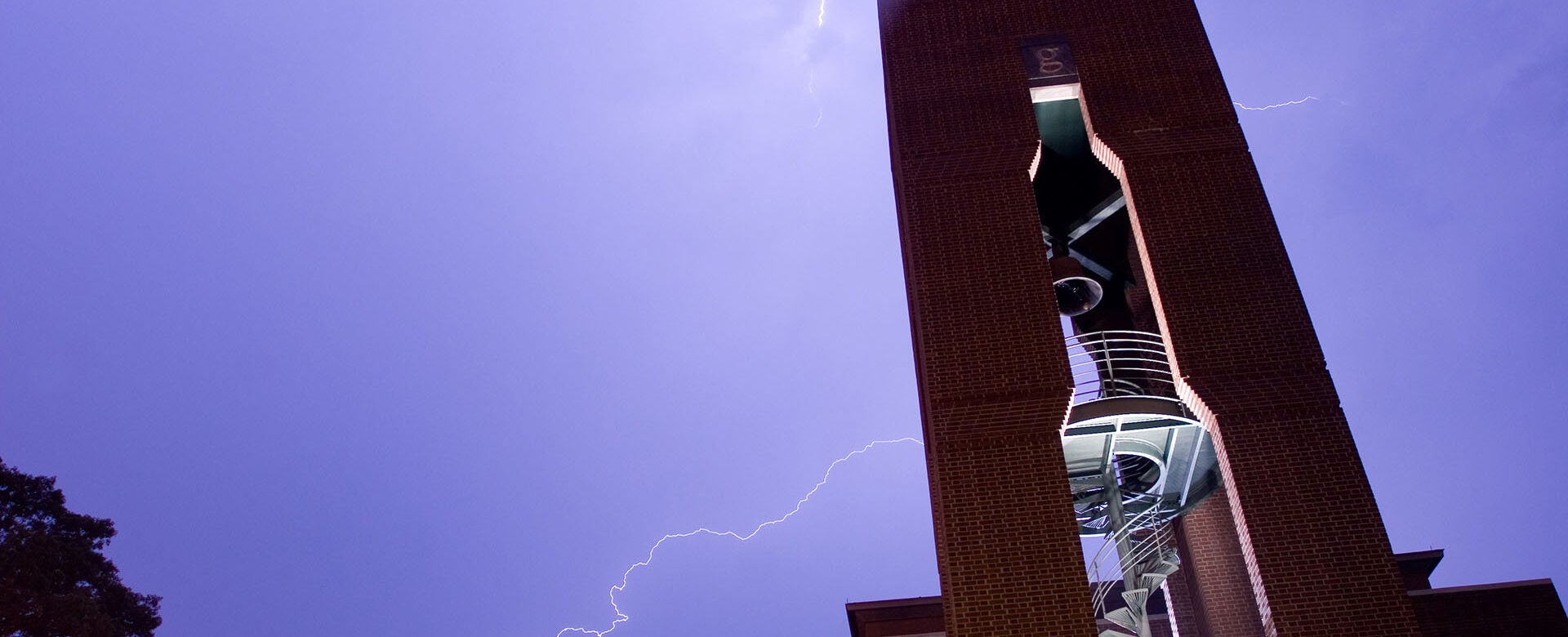Hazen Tower is the centerpiece of the courtyard linking CSHL’s Beckman Neuroscience Building and Dolan Hall. At its peak hangs a bronze bell weighing nearly a ton. Above the bell, four letters are inscribed in gold: “a” for adenine, “c” for cytosine, “t” for tyrosine, and “g” for guanine. They’re the building blocks of DNA, the basis of life as we know it. An appropriately shaped helical staircase rises from the ground between the tower’s four brick columns. It winds its way up to a circular platform offering an unobstructed view of the inner harbor.
You don’t have to visit CSHL to hear Hazen ring. Listen to any episode of At the Lab, and you’ll catch the bell in our three-minute podcast’s opening theme.
“One of the things I love about working at CSHL is the environment,” CSHL Assistant Professor Lucas Cheadle says. “Hazen Tower is one of the first landmarks you see from across the harbor. Its spiral staircase is a clear homage to the genetic code that lies within each individual on campus. Performing basic biology research in an environment that is so intertwined with nature creates a synergy that helps propel our work forward.”
Hazen Tower was named in honor of former CSHL Trustee Lita Annenberg Hazen. The late philanthropist was a lifelong supporter of science. In the late ’80s, she became a founding donor of CSHL’s then-budding Neuroscience Program. Her support was key to the construction of the Beckman Neuroscience Laboratory, dedicated in 1991 alongside Dolan Hall and Hazen Tower.

Today, Beckman houses the labs of five CSHL researchers. Professor & HHMI Investigator Leemor Joshua-Tor studies the molecular machinery our cells depend on to function normally. Professor Hiro Furukawa explores how the brain regulates signals passed between neurons. Associate Professor Jessica Tollkuhn studies sex hormones’ roles in the brain. Assistant Professor Gabrielle Pouchelon focuses on the origins of neurodevelopmental disorders. And Assistant Professor Lucas Cheadle investigates how immune cells called microglia interact with the brain. (In fact, you can catch him talking about this topic as part of our Cocktails & Chromosomes series at Industry bar in Huntington, NY.)
As for Lita Annenberg Hazen, the biomedical philanthropist passed away in 1995. However, her contributions have helped ensure the Laboratory’s place at the forefront of neuroscience research. Today, her legacy remains every bit as strong as the tower that bears her name.

